HAZWOPER Refresher Training Online-Elective Options
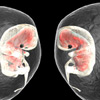 Chemical Exposure
Chemical Exposure
This module in HAZWOPER Refresher elective options discusses Hazardous chemicals in general terms with an emphasis on exposure pathways, toxicology, exposure limits and chemical exposure monitoring. Among the major hazard categories discussed are: caustics and corrosives, toxics, carcinogens, flammables and reactives. Legal limits verses recommended limits are discussed in layman’s terms. This module is a good introduction and companion module to General Chemical Hazards at Environmental Sites and also provides needed background for Use of Direct Reading Instrumentation at Hazardous Waste Sites.
 General Chemical Hazards at Environmental Sites
General Chemical Hazards at Environmental Sites
This module in Hazwoper Refresher elective options describes common chemicals encountered on HAZWOPER and environmental sites in specific detail: It stresses such practical information as typical exposure pathways, relative toxicity, realistic potential for exposure and recommended personal protective equipment for each chemical hazard discussed. It is an excellent follow-up and companion module to the Chemical Exposure module described above.
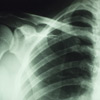 Ionizing Radiation
Ionizing Radiation
This module in Hazwoper Refresher elective options discusses the basics of radiation that hazardous waste workers should be familiar with if activities produce an exposure potential. It acts as an introduction to radioactivity and radioactive materials and is designed to assist workers with developing an understanding of radiation safety, measurement and assessment concepts necessary for many hazardous waste sites.
 Biological Hazards
Biological Hazards
Hazardous waste workers may come into contact with a number of biological hazards. Etiologic agents may be dispersed in the environment via water and wind just as chemical hazards can. Biological hazards that may be present at hazardous waste sites include potentially toxic molds and soil-borne spores and viruses, poisonous plants, insects, animals and indigenous pathogens. This module in Hazwoper Refresher elective options gives a good introduction to these potential hazards and provides solutions for avoiding exposure.
 Cold Exposure
Cold Exposure
Cold injury such as frostbite and hypothermia are significant hazards of hazardous waste work in certain climates when low temperatures and wind-chill is prevalent. This is especially true for highly humid environments such as those found in many locations of the southern and eastern United States. The physiology of cold stress is discussed and practical advice offered for use by workers and management alike including the proper care and treatment of cold disorders.
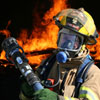 Explosion and Fire
Explosion and Fire
One of the most serious potential accidents on hazardous waste or environmental sites involves fire, explosion, or both. Fires can erupt spontaneously from improper storage of material or incompatible waste in drums or dumpsters, or they can result from site activity such as the improper mixture of incompatible chemicals or introduction of an ignition source into an explosive or flammable environment. Practical advice is offered in this module including proper gasoline and fueling operations, use of fire extinguishers, and monitoring of explosive environments. This module in Hazwoper Refresher elective options can help the employer meet the OSHA requirement for annual fire extinguisher training for affected employees.
 Oxygen Deficiency
Oxygen Deficiency
Oxygen deficiency can result from operations on work sites from the displacement of oxygen by another gas (such as methane), or the consumption of oxygen by a chemical reaction (Such as rust inside a vessel). Confined spaces, open test pits or low-lying areas are particularly vulnerable to oxygen deficiency and should always be monitored prior to entry. Qualified field personnel should always monitor oxygen levels and should use atmosphere-supplying respiratory equipment when oxygen concentrations drop below 19.5 percent by volume. This module in Hazwoper Refresher elective options discusses simple and chemical asphyxiants and provides tips for monitoring and avoiding oxygen-deficient environments.
 Electrical Hazards
Electrical Hazards
The second leading cause of worker death in hazardous waste and construction work (after falls) is electrocution. Overhead power lines, downed electrical wires, and buried cables all pose a danger of shock or electrocution if workers contact or sever them during site operations. Electrical equipment used on site may also pose a hazard to workers. This module in Hazwoper Refresher elective options discusses the most common causes of electric shock on hazardous waste sites and emphasizes the regulations that pertain to clearances and safe distances as well as clearance of underground utilities.
 Heat Stress
Heat Stress
Heat can be a serious hazard on construction sites but is especially prevalent during hazardous waste operations where chemical protective clothing and respiratory protection are commonly worn. The use of personal protective equipment (PPE) can create significant heat stress from a variety of factors including the weight of the PPE, reduction of the body’s normal heat exchange mechanisms, and an increase in energy expenditure. Because of these factors, a worker must be thoroughly trained in signs and symptoms of heat exposure. Emphasis is placed on the many methods of heat-stress monitoring and practical advice offered. An important module for most hazardous waste and environmental workers to complete and understand.
 Noise and Hearing Conservation
Noise and Hearing Conservation
Work around heavy equipment or industrial operations often creates excessive noise which can be harmful to hearing and create other safety hazards due to the inability to hear alarms, poor verbal communication and difficulty in concentrating. This module in Hazwoper Refresher elective options places emphasis on noise monitoring, hearing conservation programs and engineering and administrative controls, designed to heighten awareness and help solve noise problems on site.
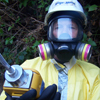 Safety Hazards
Safety Hazards
Hazardous waste sites can be a dangerous place to earn a living. Besides the potential for exposure to hazardous chemicals, the sites often become large construction sites with extensive use of heavy equipment, earth-work, confined spaces and all the hazards of heavy construction. This module in Hazwoper Refresher elective options provides emphasis on physical safety issues that are common to hazardous waste and environmental sites.
 Hazards Associated with Abandoned Buildings
Hazards Associated with Abandoned Buildings
Hazardous waste sites often include structures or warehouses which have been abandoned or otherwise have become dilapidated. Hazards addressed in this module include everything from structural damage to health hazards which are sometimes not immediately apparent. These can include hazardous building materials which contain asbestos, lead, polychlorinated biphenyls (PCBs) or mercury, or biological contamination of building materials such as mold or animal feces which could be contaminated with potentially dangerous etiological agents.
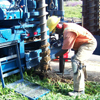 Hazards of Environmental Drilling
Hazards of Environmental Drilling
The most hazardous activity of most environmental work involves drilling and excavating. Not only are inherent safety hazards present with this type of work but hazardous contaminants in soil and the hazards of working in personal protective equipment (PPE) add to the potential risks involved. This module in Hazwoper Refresher elective options discusses some of the more common hazards of drilling operations including chemically contaminated soil and offers recommended solutions.
 Work Over Water
Work Over Water
A portion of environmental work is conducted over or alongside water including work from bridges and vessels and work from docks, piers or alongside rivers and other waterways. This work presents special hazards and is codified with specific OSHA regulations. This module in Hazwoper Refresher elective options discusses the hazards common to this work and the guidelines and regulations that pertain to it.
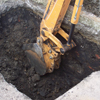 Hazards at Landfill Sites
Hazards at Landfill Sites
Landfills present their own specific set of unique hazards to workers including chemical exposure, fire and explosion hazards and the possibility of unearthing any number of hazardous materials. The most common hazards of landfills are discussed in this module of Hazwoper Refresher elective options including explosive environments, vinyl chloride and hydrogen sulfide.
 Hazards of UST Removal
Hazards of UST Removal
Underground Storage Tank (UST) removal is often thought of as routine, however serious safety and health hazards are present with this activity including fire and explosion hazards, work near heavy equipment, work around suspended loads, and excavation and confined space hazards. Each of these common hazards to UST removal is discussed in this module.
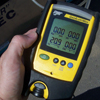 Use of Direct Reading Instrumentation at Hazardous Waste Sites
Use of Direct Reading Instrumentation at Hazardous Waste Sites
Hazard monitoring is a routine part of hazardous waste site investigation, remediation and environmental work. In the hazardous waste environment it is often imperative to know approximate concentrations of airborne gases and vapors as they occur. Direct reading instruments such as Flame Ionization Detectors, Photo ionization Detectors, Combustible Gas Indicators and Detector tubes suit this purpose well and are discussed in this module. This module in Hazwoper Refresher elective options is a good companion module to Chemical Exposure.
 Negative Pressure Enclosures
Negative Pressure Enclosures 
Negative-pressure enclosures, also called "containments" are used in the remediation of many types of hazardous materials including asbestos, lead, mold, PCBs, heavy metals, and animal feces just to name a few. This module in Hazwoper Refresher elective options explains how these engineering controls are constructed, how they work, and even details the emergency procedures necessary for containment breeches and/or personal injury within the enclosure.
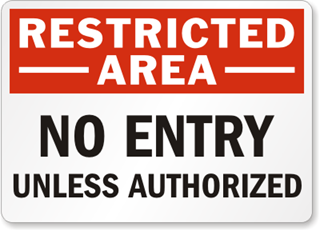 HAZWOPER Work in Public Environments
HAZWOPER Work in Public Environments 
This module discusses means and methods to protect the non-industrial worker and general public during remediation or disturbance of hazardous substances when HAZWOPER operations are occurring in close proximity to these individuals.
